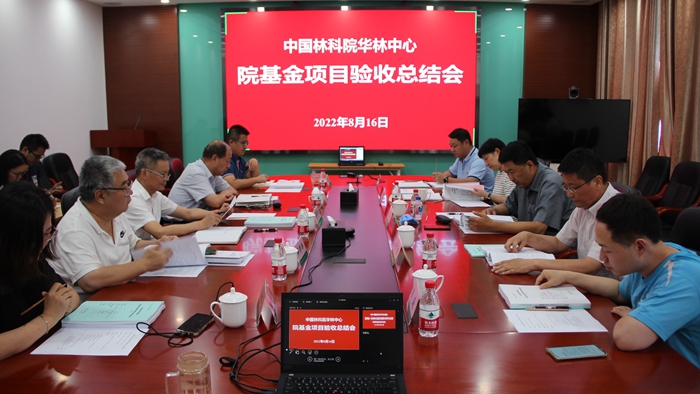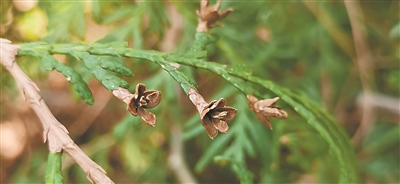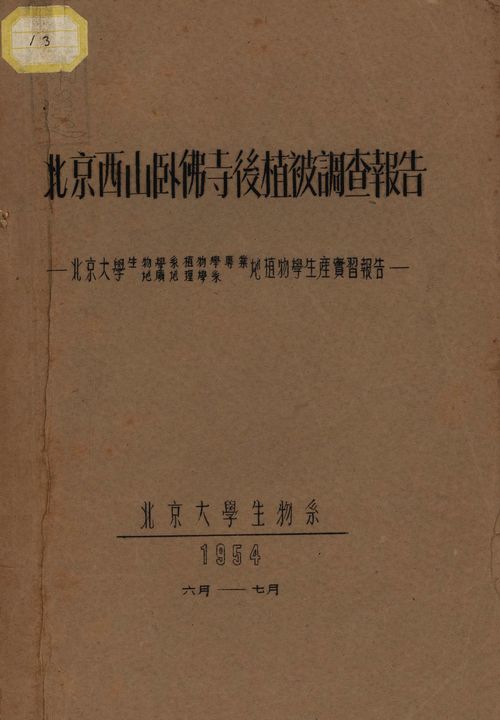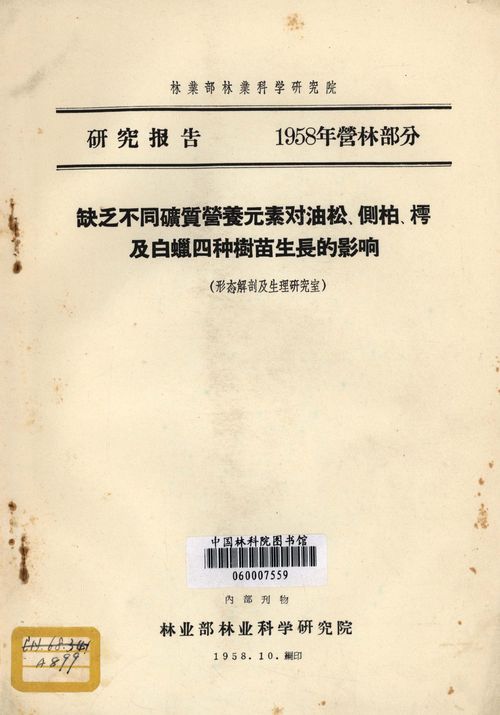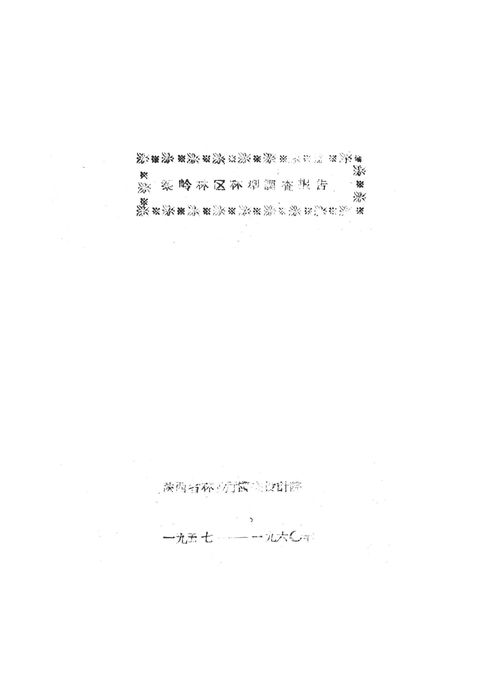
北京市典型古树群落生长及土壤理化性质的空间分异特征
编号
lyqk010118


中文标题
北京市典型古树群落生长及土壤理化性质的空间分异特征


作者
段文军
张新宇
李莹
许鹏飞
马嫒馨
田艳春
盖艺方
穆子慧


作者单位
北京市园林古建设计研究院有限公司 北京 100081


期刊名称
中国城市林业


年份
2023


卷号
21


期号
1


栏目名称
研究论文


中文摘要
古树群落是北京市古树的主体,对其进行系统研究可以为古树保护与管理提供科学依据。以北京市典型的古侧柏群落为研究对象,对1088株古树的生长指标进行每木调查,分析不同坡位和坡向古树叶片叶绿素含量(叶绿素a、叶绿素b、叶绿素a+b、叶绿素b/a)和树冠投影范围内土壤的理化性质差异,并进一步分析叶绿素含量、土壤理化性质与古树生长的关系。结果表明:1)下坡古树的树高、胸径和冠幅均显著高于中、上坡,增幅都超过了5%;阴坡的树高和胸径比阳坡的显著增加了8%以上。2)古树叶片叶绿素含量在下坡比中、上坡显著降低了15%~43%,阳坡比阴坡显著增加7%以上。3)从下坡到上坡,土壤容重由1.30 g·cm-3降低到1.12 g·cm-3,而含水率由18.00%增加到32.68%,土壤有机质、有效磷含量都是中坡最高,碱解氮、速效钾、含盐量和含水量都是上坡最高;土壤有机质、碱解氮、含盐量、含水量都是阳坡大于阴坡,而有效磷、速效钾和容重都是阴坡高于阳坡。4)古树树高与叶绿素含量、土壤含水量极显著正相关,与土壤容重显著负相关。本研究表明,古树的生长、叶片光合特性、土壤理化性质随坡位、坡向呈现明显的空间分异特征,且不同坡位和坡向的土壤容重、含水量、有机质、碱解氮、有效磷、速效钾等土壤理化性质的差异对古树的生长产生了影响。今后应加强对古树群落土壤情况的连续监测,以制定更加科学的古树保护方案。


关键词
古树群落
侧柏
叶绿素含量
土壤理化性质
上方山国家森林公园
北京市


基金项目
北京市古树保护小区建设标准研究项目


英文标题
Spatial Differentiation of Tree Growths and Soil Physical-Chemical Properties in A Typical Ancient Tree Community in Beijing


作者英文名
Duan Wenjun, Zhang Xinyu, Li Ying, Xu Pengfei, Ma Aixin, Tian Yanchun, Gai Yifang, Mu Zihui


单位英文名
Beijing Institute of Landscape and Traditional Architectural Design and Research Co., Ltd., Beijing 100081, China


英文摘要
Ancient tree communities conserve the largest number of ancient trees in Beijing. The study of ancient tree communities can provide scientific basis for the protection and management of ancient trees. In this paper, 1 088 ancient trees in Beijing are individually investigated in terms of their growth indexes in a typical ancient Platycladus orientalis community, in order to analyze the chlorophyll content (chlorophyll a, chlorophyll b, chlorophyll a+b, and chlorophyll b/a) in the leaves of the ancient trees growing at different positions and aspects of slope and the physical and chemical properties of soil within the canopy projection range. The relationship among chlorophyll content, soil physical and chemical properties and the growth of ancient trees is then determined. The results show that:1) The height, DBH and crown width of ancient trees on the lower slope are significantly higher than those on the middle and upper slopes by more than 5%; the height and DBH of the trees on the shady slope are higher by more than 8% than the trees on the sunny slope; 2) The chlorophyll content of ancient trees in the lower slope falls significantly by 15%-43% compared with those on the middle and upper slope, and the ancient trees in the sunny slope have their chlorophyll content increased by more than 7% compared with the trees on the shady slope; 3) From lower to upper slope, soil bulk density decreases from 1.30 g·cm-3 to 1.12 g·cm-3, and soil water content increases from 18.00% to 32.68%. The contents of soil organic matter and available phosphorus are the highest on the middle slope, and the contents of alkali-hydrolyzed nitrogen, available potassium, salt and water are the highest on the upper slope. Soil organic matter, alkali-hydrolyzed nitrogen, salt content and water content are higher on the sunny slope than on the shady slope, while available P, available K and bulk density are higher on the shady slope than on the sunny slope; and 4) The height of ancient trees is positively correlated with chlorophyll content and soil water content, and negatively correlated with soil bulk density. The results of this study show that the growth, photosynthetic characteristics of leaves and soil physical and chemical properties of ancient trees present obvious spatial differentiation with slope positions and slope aspects, and the differences in soil physical and chemical properties such as bulk density, water content, organic matter, alkali-hydrolyzed nitrogen, available phosphorus and available potassium in soil at different slope positions and slope aspects have an impact onthe growth of ancient trees. Therefore, the continuous monitoring of soil conditions of ancient tree community should be strengthened in the future, so as to develop more scientific protection plan for ancient trees.


英文关键词
ancient-tree community;Platycladus orientalis;chlorophyll content;soil physico-chemical property;Shangfangshan National Forest Park;Beijing


起始页码
58


截止页码
66


投稿时间
2022/11/14


作者简介
段文军(1987-),男,博士,高级工程师,研究方向为城市林业。E-mail:wenjunduan126@126.com


通讯作者介绍
李莹(1978-),女,硕士,高级工程师,研究方向为古树名木保护。E-mail:839481026@qq.com


E-mail
839481026@qq.com


DOI
10.12169/zgcsly.2022.11.14.0001


参考文献
[1] 付炳鑫.古树名木园林价值评价研究[D].福州:福建农林大学,2018.
[2] 张宝贵.北京的古树名木[J].北京规划建设,2000(3):60-62.
[3] 北京古树正加速减少[N].北京日报,2007-03-28(014).
[4] 陈赛赛,李祉宣,张明娟.国内外古树研究进展[J].中国城市林业,2022,20(3):147-152.
[5] 王玉山,陶娟,赵进红,等.古树名木研究概述[J].安徽农业科学,2013,41(3):1196-1198,1201.
[6] VANNOORDWIJK M V,WIDIANTO,HEINEN M,et al.Old tree root channels in acid soils in the humid tropics:important for crop root penetration,water in filtration and nitrogen management[J].Developments in Plant and Soil Sciences,1991,45:423-430.
[7] RUST S,ROLOFF A.Reduced photosynthesis in old oak (Quercus robur):the impact of crown and hydraulic architecture[J].Tree Physiology,2002,22(8):597-601.
[8] SALICK J,AMEND A,ANDERSON D,et al.Tibetan sacred sites conserve old growth trees and cover in the eastern Himalayas[J].Biodiversity and Conservation,2007,16(3):693-706.
[9] THE WOODLAND TRUST.Tree Guides NO.5:trees and climate change[M].London:Ancient Tree Forum,2010.
[10] 刘毓,李锡宁,刘红权,等.济南市古树名木资源现状和分布特征[J].中国城市林业,2022,20(4):80-86.
[11] 王圳,李凤凤,高亚军,等.连云港市古树名木空间分布特征与资源组成[J].中国城市林业,2021,19(5):125-129.
[12] 董锦熠,胡军和,金晨钟,等.我国古树资源的生存现状评估及威胁因素分析[J].应用生态学报,2021,32(10):3707-3714.
[13] 秦春,夏生福,秦占义,等.基于树木年轮学的古树树龄估算:以敦煌市香水梨为例[J].应用生态学报,2021,32(10):3699-3706.
[14] 李庆,马建鑫,赵凤君,等.北京市戒台寺、潭柘寺古树衰老的几个生理特征研究[J].西部林业科学,2004,33(2):37-41.
[15] 郭善基,樊宝敏,张太岩,等.银杏古树更新复壮技术探索[J].中国城市林业,2015,13(1):23-26,32.
[16] 康乐.北方部分地区古树名木复壮养护技术现状及保护对策研究[D].杨凌:西北农林科技大学,2015.
[17] 徐婷,刘丹,殷秀强,等.古树健康诊断的复壮措施及效果评价指标[J].东北林业大学学报,2022,50(9):45-49.
[18] 刘发照.谷歌地球专业版软件和GIS/GPS在古树名木地理信息系统中的应用初探:以江西省横峰县古树名木为例[J].防护林科技,2017(2):103-106.
[19] 薄芳芳.基于BPR的古树名木智能信息化管理系统研究[J].安徽农业科学,2016,44(32):204-206.
[20] 杨静怡,马履一,贾忠奎.古都北京的古树概述[J].北方园艺,2010(13):110-113.
[21] 郝云峰,王久丽,宋铁英.北京市古树名木网络化管理的研究与开发[J].农业网络信息,2004(6):18-20.
[22] 杨娱,田明华,吴成亮,等.公众对古树名木认养意愿的影响因素分析:以北京市为例[J].长江流域资源与环境,2021,30(2):302-309.
[23] 李淑霞,刘亚斌,钟鹏,等.西宁盆地4种草本和灌木植物降盐效应试验研究[J].干旱区研究,2019,36(1):147-158.
[24] 徐雨晴,陆佩玲,于强.气候变化对植物物候影响的研究进展[J].资源科学,2004,26(1):129-136.
[25] 杨梦.古树保护与复壮技术的研究:以阜阳市颍上县为例[D].合肥:安徽农业大学,2020.
[26] 刘贞琦,刘振业,马达鹏,等.水稻叶绿素含量及其与光合速率关系的研究[J].作物学报,1984,10(1):57-62.
[27] 赵娟,杨军,赖娜娜,等.古侧柏林土壤和植物营养元素含量与树势相关性研究[J].中国农学通报,2013,29(13):9-13.
[28] 张国华.古树衰老状况及生理生化特性研究[D].北京:首都师范大学,2009.
[29] 汤珧华,潘建萍,邹福生,等.上海松柏古树生长与土壤肥力因子的关系[J].植物营养与肥料学报,2017,23(5):1402-1408.
[30] 刘克锋,龚学,袁跃云,等.天坛公园土壤研究Ⅲ、古树生长区围栏效果分析[J].北京农学院学报,1994,9(1):15-21.
[31] 刘克锋,王衍庆.北京天坛公园土壤研究Ⅱ.土壤养分状况及其变化规律[J].北京农学院学报,1990,5(2):37-44.
[32] 聂立水,王登芝,王保国.北京戒台寺古油松生长衰退与土壤条件关系初步研究[J].北京林业大学学报,2005,27(5):32-36.
[33] 王衍庆,刘克锋.北京天坛公园土壤研究Ⅰ、土壤物理性状的变化规律[J].北京农学院学报,2009,4(3):103-109.
[34] 程黎霞,刘晶岚,黄灏峰,等.北京地坛公园古侧柏土壤理化特性研究[J].林业资源管理,2012(6):112-114.
[35] 文璐,刘晶岚,习妍,等.北京地区重要古树土壤物理性状分析[J].水土保持研究,2011,18(5):175-178.
[36] 傅徽楠,王瑛.上海古树生长环境的土壤质量及评价[J].上海建设科技,2007(1):44-46,62.
[37] 沈全英.曲水园古松柏生长环境的土壤质量与评价[J].上海建设科技,2009(6):50-52.
[38] 北京林业大学,北京市园林科学研究院.园林绿化种植土壤要求DB11/T 864-2020[S].北京:北京市市场监督管理局,2020.
[39] 刘育俭.天坛公园古柏林下地被植物土壤养分状况及适应性评价[C].2013北京城市园林绿化与生态文明建设.北京:科学技术文献出版社,2013:343-349.
[40] 全国土壤普查办公室.中国土壤普查技术[M].北京:农业出版社,1992.
[41] 孙向阳.土壤学[M].北京:中国林业出版社,2005.
[42] 张新胜,郭从俭,张万钦,等.楸树叶绿素含量与生长相关研究[J].河南林业科技,1996(1):23-24.
[43] 叶少萍,李铤,张俊涛,等.基于主成分分析的古树土壤肥力综合评价[J].生态科学,2022,41(1):196-205.


PDF全文
浏览全文


-
相关记录
更多
- 山杏与侧柏山地混交造林试验及效果调查分析 2023
- 作品名称:城市庭院——北京市新华里社区广场景观设计 2022
- 计划火烧对植被和土壤影响研究综述 2022
- 森林凋落物特性及对土壤生态功能影响研究进展 2021
- 北京城市绿地彩叶植物应用现状及优化策略 2023
- 城市化对城乡生态空间碳储量的影响机制——以北京市为例 2023
 打印
打印

